#581065 - 02/13/10 10:39 AM
 Thanks Curt
Thanks Curt
|

Three Time Spawner
Registered: 09/07/05
Posts: 1867
Loc: Spokane WA
|
Thank you for the good explanation on the radio this morning of the unusually large size and number of steelhead smolts (rainbows) in the rivers this year. These fish are very aggressive and you can see them feeding on the surface in places and times of the year that you normally wouldn't see fish of this size. The first few I hooked I assumed were cutts until I got them to the boat and found them to be wild Steelhead (rainbows).
|
|
Top
|
|
|
|
#581077 - 02/13/10 11:33 AM
 Re: Thanks Curt
[Re: ondarvr]
Re: Thanks Curt
[Re: ondarvr]
|

River Nutrients
Registered: 12/30/07
Posts: 3116
|
I heard that.
It will be beneficial to lurkers, if he hits the highlites again, in print.
|
|
Top
|
|
|
|
#581120 - 02/13/10 03:01 PM
 Re: Thanks Curt
[Re: Fast and Furious]
Re: Thanks Curt
[Re: Fast and Furious]
|

Juvenile at Sea
Registered: 01/11/00
Posts: 113
Loc: Darrington, WA
|
I have no idea who or what you are talking about but it sounds like a good thing.
|
|
Top
|
|
|
|
#581269 - 02/14/10 01:40 PM
 Re: Thanks Curt
[Re: JoJo]
Re: Thanks Curt
[Re: JoJo]
|

Three Time Spawner

Registered: 03/07/99
Posts: 1440
Loc: Wherever I can swing for wild ...
|
I have not heard Curt's piece, but I am sure it was good and informative. I applaud Curt's efforts and work to bring visibility to the importance of resident rainbow trout. The WSC has been advocation for stronger protection for RBT as more and more research is proving their importance to their role in the wild steelhead life cycle. Below is the WSC testimony to the Commission this year:
Good afternoon, The Wild Steelhead Coalition would like to thank the commission and WDFW the opportunity to provide testimony. We would also like to commend the department for putting forth some good proposals that will benefit wild steelhead. However we would like you to pay particular attention to the WSC comment regarding proposal #23 and take this opportunity to bring focus to the importance to protect wild riverine rainbow trout, the resident form of wild steelhead and the importance to protect this vital element.
The WSC has provided each Commission member a copy of John McMillian’s article published by the American Fisheries Society on resident rainbow trout and wild steelhead interactions. Research is showing that resident rainbow trout in our anadromous highways and byways plays a significant role in the diverse life histories of wild steelhead. Resident rainbow trout, through participation in the late winter/spring spawning interactions of wild steelhead improve the success of fertilization of female steelhead, especially during
April, May and June. During this period, male wild steelhead become depleted and the steelhead population is in part reliant on rainbow trout to provide the male partner for spawning.
Steelhead and resident rainbow trout can produce independently the opposite form and resident rainbow trout can be the leading or single source of anadromous smolt production when the abundance of steelhead is depleted or extinct.
The WSC finds it scientifically enigmatic to understand why the WDFW can protect one form of steelhead trout, the anadromous steelhead, but continues to allow harvest and/or gear methods that induce high mortalities of the other form, the resident rainbow trout. Both forms, by definition and taxonomy are classified as the same species, steelhead trout, and are genetically the same in each watershed. Each form contributes to the abundance and productivity of the other form.
Rainbow trout can be an important component in the recovery of wild steelhead stocks and the rebuilding of declining stocks. Improved regulations are needed to protect resident rainbow trout We encourage the WDFW to pursue stream management strategies that protect all juvenile wild salmonids and rainbow trout while continuing to allow selective fisheries for adult salmon and hatchery steelhead. Aside from being confusing proposal #23 needs to be simplified and provide stronger regulations to further protect resident rainbow trout.
Respectfully Submitted,
Wild Steelhead Coalition
Rich Simms, President
_________________________
Decisions and changes seldom occur by posting on Internet bulletin boards.
|
|
Top
|
|
|
|
#581301 - 02/14/10 04:42 PM
 Re: Thanks Curt
[Re: Double Haul]
Re: Thanks Curt
[Re: Double Haul]
|

River Nutrients
Registered: 11/25/01
Posts: 2834
Loc: Marysville
|
JoJo -
The resident life history of the O. mykiss - the resident rainbow - has not been included in any of the steelhead listings that I'm aware off. When the folks from NOAA fisheries were questioned about that issue at the public meetings the biological staff agreed that the resident life history was potentially an important piece of the species diversity but the adminstrative decision (read political decision made in Washington DC) was not to include them. The argument was that NOAA only had authority over anadromous fish and thus had no authority to include the resident life history.
That of course ignored the fact that the resident and anadromous life history forms of the coastal rainbow complex interact with each other (including spawning together) and that matings of anadromous fish can produce resident fish and matings of resident fish can produce anadromous fish. Further when the USFWS listed Puget Sound bull trout they included all life history forms even though they only had "authority " over non-anadromous fish. In that case the feds went so far that the diversity represented by all the various life history was essnetial to recovery of the ESA listed bull trout.
And yes I agree that the inclusion of the resident rainbow with the steelhead not only makes sense from a species diversity point of view but is likely that life hsitory divesity will be essential to insure the long term survival of the species and any potential recovery.
As alluded to in Double Haul's testimony to the Wildlife commission proper resource management to protect the resident life history will just like what we are seeing with the anadromous form/steelhead changes in the management paradigm. As often is the case such changes are likely to be painful for many anglers and not likely to recieve broad support. As a result the rainbow complex (in all of its life history forms) will continue to be less than what it couold be. And that includes steelhead populations that is so important to many here.
BTW -
If after listing to the link provided by Robbo anyone have questions on rainbow/steelhead interactions or are interested in discussion any of this in more detail I would be more than happy to take my best shot at providing what little I know to the discussions.
Tight lines
Curt
|
|
Top
|
|
|
|
#581314 - 02/14/10 06:43 PM
 Re: Thanks Curt
[Re: JoJo]
Re: Thanks Curt
[Re: JoJo]
|

Returning Adult
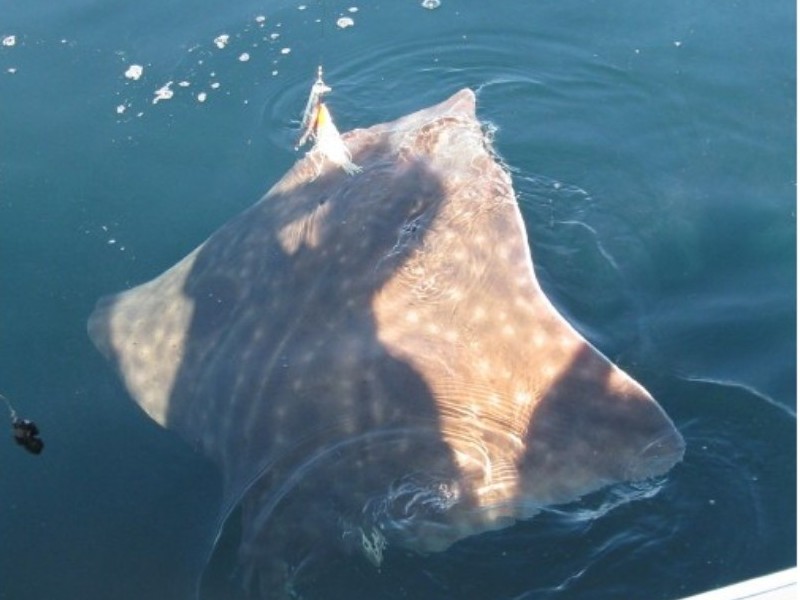
Registered: 08/20/08
Posts: 293
Loc: Lewis Co via Bham
|
Curt,
Enjoyed the interview, I've always suspected that resident rainbows play a big role in steelhead production. My question is have we experienced "oscillations" between the steelhead/resident rainbow lifestyle strategies before. Is there a feedback loop between one and the other?
I realize that certain habitat structure, or the lack of, is part of what makes the RR behavior more successful now. Just curious if a higher population of RR in the stream eventually leads to movement towards the anadromous lifestyle and vice-versa. Thanks!
_________________________
If we ignore the environment it will just go away
|
|
Top
|
|
|
|
#581332 - 02/14/10 09:36 PM
 Re: Thanks Curt
[Re: fshwithnoeyes]
Re: Thanks Curt
[Re: fshwithnoeyes]
|

River Nutrients
Registered: 11/25/01
Posts: 2834
Loc: Marysville
|
fishwithnoeyes -
While I would be surprised if similar "oscillatiuons" had not happen in the past we have not see the kind of extremely poor marine survival of steelhead that we have seen in the last decade since before the 1950s.
I believe that the survival scale been the resident and anadromous life forms in many of our river systems has further been tipped in favor of the resident forms due to increases in degraded habitats.
Between those two factors in areas such as Puget Sound there has not anytime in many decades where the anadromous life history has been at such a natural selection disadvantage.
Tight lines
Curt
|
|
Top
|
|
|
|
#581352 - 02/14/10 11:29 PM
 Re: Thanks Curt
[Re: Smalma]
Re: Thanks Curt
[Re: Smalma]
|

Free Prostate Exams
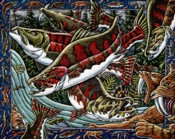
Registered: 01/06/10
Posts: 1544
Loc: Sequim
|
fishwithnoeyes -
While I would be surprised if similar "oscillatiuons" had not happen in the past we have not see the kind of extremely poor marine survival of steelhead that we have seen in the last decade since before the 1950s.
I believe that the survival scale been the resident and anadromous life forms in many of our river systems has further been tipped in favor of the resident forms due to increases in degraded habitats.
Between those two factors in areas such as Puget Sound there has not anytime in many decades where the anadromous life history has been at such a natural selection disadvantage.
Tight lines
Curt Smalma, You are a good guy. Please keep posting. Good night, all.
|
|
Top
|
|
|
|
#581437 - 02/15/10 04:25 PM
 Re: Thanks Curt
[Re: Doctor Rick]
Re: Thanks Curt
[Re: Doctor Rick]
|

Spawner
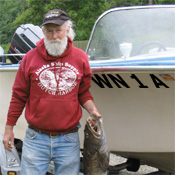
Registered: 09/17/04
Posts: 592
Loc: Seattle
|
BTW -
If after listing to the link provided by Robbo anyone have questions on rainbow/steelhead interactions or are interested in discussion any of this in more detail I would be more than happy to take my best shot at providing what little I know to the discussions. Curt, a good introduction to rainbow trout (Oncorhynchus mykiss) life history, It raised a few questions that I have been thinking about. Understanding rainbow is a good first step in understanding the genus, salmonids, and what the meaning of recovery might be. Early in the discussion you pointed that rainbow in our local rivers are not "residuals" but a rainbow that is not anadromous. You also mentioned the high level of plasticity of rainbow. A knowledge of phenotypic plasticity, the ability for an organism to express properties such behavior, development, or morphology in response to environmental factors is essential to understanding how populations will respond to recovery efforts. It is apparent that in the genus Oncorhynchus, particularly rainbow, cutthroat, and to some degree coho and chinook, the anadromous form is a phenotype that is determined by environmental factors. Question #1; What is the sex ratios of the resident rainbow in our local rivers? Are there sufficient numbers of females to maintain the population in the available habitat without the input of anadromous females? I think the answer to this question can provide some insight towards what environmental factors are influencing steelhead populations. A given population will grow to the size that its habitat can support, carrying capacity. As you pointed out stream morphology is important for rainbow winter survival. The availability of food and spawning habitat are other determining factors. Individuals within a population compete with each other and they disperse to fill all the available suitable habitat. Throughout the great basin, the Elwha above the dams, and many places in the west there are wild populations of rainbow whose dispersal is blocked by physical barriers. In Alaska's Bristol Bay area there are healthy populations of rainbow that could be anadromous but it seems that habitat and environmental conditions are such that the anadromous phenotype is not expressed. Question #2; Why are Puget Sound steelhead runs doing so poorly while it appears that the resident form of rainbow is increasing in numbers? Is it because freshwater environmental factors favor the resident phenotype or is it a barrier to dispersal that the anadromous phenotype encounters? I would think that in a system with a healthy resident rainbow population the number of spawning steelhead would determine which phenotype would dominate. The resident rainbow and the steelhead juveniles share the same habitat and have similar requirements for development. Because of the size and age structure of the resident rainbow they are probably more efficient competitors. A larger number of steelhead juveniles could override that advantage. I don't think then that it is a freshwater environmental factor that is determining the phenotype response. I do think there is a physical barrier that the anadromous phenotype encounters that is often over looked. That is the transition from fresh to saltwater that the smolt undergoes and the physiological change it entails. Question #3; Are you familiar with the recent OSU study, ( Smolt Survival ), that found 50% to 60% of the steelhead smolts reaching the estuary disappeared within hours of reaching the saltwater? Is this a high number or would this be considered normal? The quote below is from the article describing the research. "If the mortality rate of juvenile steelhead is atypical, it could be increasing because of some environmental factor -- warmer water, more parasites, chemical contaminants, or higher acidification of ocean waters coming into the estuary, for example. Or predation may be higher because of more seals, sea lions and seabirds." If the mortality rate is atypical I tend to think that environmental factors are the cause, predators have been around forever. Environmental factors bring us back to phenotype plasticity. The real question is how do environmental factors determine phenotype. How is it that some genetic characteristics are selected and other suppressed. It is a physiological process, the endocrine system determines development, behavior, and morphological characteristics, enabling some gene to be expressed rather than others. If you have seen my recent posts you know I have interest in this aspect of fisheries science. It would seem that there are two possible ways to explain how the environmental factors could determine smolt survival. The transition from freshwater to saltwater is a major physiological transformation. It is mediated by the endocrine system, if the endocrine system is not adapted to the changing environment and can't compensate for the conditions encountered the smolts will die. Given the high plasticity of rainbow trout I don't think that this is the case. The other possibility is that the endocrine system has been compromised. That can happen if the parents of the fish were exposed to chemical contaminates. If the endocrine system is compromised such that smolts entering saltwater have a high mortality the anadromous population will only continue to decrease. Question #4; Did you read all of this? If you did any comments would be appreciated, I am sure 34 years of experience provides some insight that can't be gained at the library or on the internet. I do think that rainbow trout are a model we can use to gauge results of salmon recovery. The hundreds of millions of dollars spent on recovery are often directed at programs without regard to the plasticity of Oncorhynchus.
|
|
Top
|
|
|
|
#581447 - 02/15/10 05:47 PM
 Re: Thanks Curt
[Re: Double Haul]
Re: Thanks Curt
[Re: Double Haul]
|

Three Time Spawner
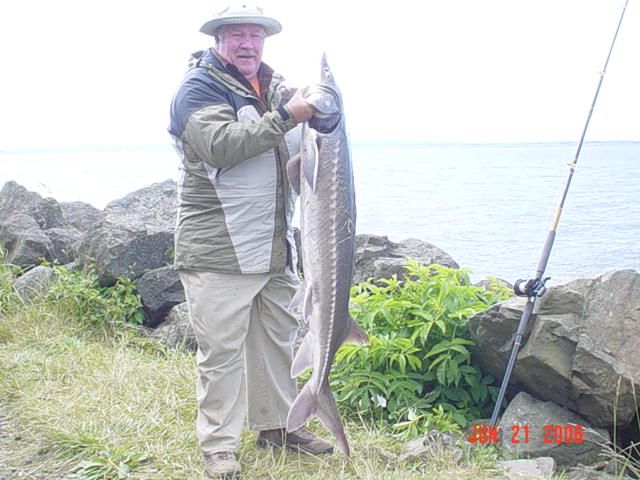
Registered: 01/05/07
Posts: 1551
Loc: Bremerton, Wa.
|
WN1A Interesting read for sure. You stated that the smolt are dissapearing at the estuary's. On the Nasale I have watched the cormorants follow the smolt down river with the tide, its like they are playing leapfrog, flocks of 100's. Here is a simple thought through the eye of a cormorant, ah steelehead smolt on the menue this week, next week chum smolt, next week coho smolt, next week chinook smolt, ok out of smolts so on to herring for a while, ah smelt are here, on to smelt, and lets not forget squid which are around summer and winter. Ok so much for the menue, now on to the count. For arguments sake it only takes 10 smolt to feed mr cormorant for a week. Only now we 1000's of cormorant so a lot of food is eaten every week. The limiting item in the cormorant population is food, assume we have enough cormorant to eat nearly all the smolt. Here is where it gets tricky as we only have a few fish coming back to spawn to produce smolt so I think there is just enough fish to barly keep up a presence. Since a smolt is like a steak to a cormorant, he is all over it when available........Find a substitute for that steak or remove the cormorant and you might fix the problem. I really think most of the smolt are eaten by predators at the estuary.........What will happen if you, as an experiment let loose about 2 million smolt each, from about 10 creeks at the same time......would there be a better survival rate since the birds are now full and can let some swim on by? A little long winded but what do you think?
This is not a hatchery is best post, just thinking about the great numbers of fish it might take for good survival.
Edited by N W Panhandler (02/15/10 05:51 PM)
_________________________
A little common sense is good, more is better.
Kitsap Chapter CCA
|
|
Top
|
|
|
|
#581470 - 02/15/10 07:07 PM
 Re: Thanks Curt
[Re: N W Panhandler]
Re: Thanks Curt
[Re: N W Panhandler]
|

Three Time Spawner
Registered: 09/07/05
Posts: 1867
Loc: Spokane WA
|
Off the thread topic slightly, but has to do with diving ducks (birds).
As the fish returns increased on the Sky, so did the number of birds feeding on them, lots of cormorants, and other diving ducks, plus the number of eagles increased, feeding on both fish and birds. As the fish returns started dropping off the eagles started feeding on the ducks more often. I now can watch eagles target diving ducks for lunch.
I've seen 9 or more eagles sitting in the trees and the ducks hiding under brush and logs at or near the bank, you can't even scare them out from under their hiding places when eagles are around. Eagles even land on the log above the ducks and hop around trying to drive them out, when one tries to escape the eagle makes short work it.
The eagles will also circle above the ducks, with the ducks diving to avoid being grabbed. The eagles just keep circling tighter and closer until they're eventually right above the duck when it surfaces, then its one less duck.
Chums had been a major food source for the eagles, but with roe being very popular in Asia we just don’t see many in the river now.
|
|
Top
|
|
|
|
#581515 - 02/15/10 08:35 PM
 Re: Thanks Curt
[Re: ondarvr]
Re: Thanks Curt
[Re: ondarvr]
|

Reverend Tarpones

Registered: 10/09/02
Posts: 8379
Loc: West Duvall
|
On a related note, back in the day, the state used to plant thousands of rainbow trout in local streams. If my memory is correct that was in the 60s. We had property on the Tahauya River and for about a week after the plantings, everyone, even the little kids, could catch trout at will, then they seemed to disappear. Did those hatchery trout head out to the salt, or did they smarten up? We always assumed they went out and became steelhead, but had no real evidence that was true. I do know that back then the Tahauya had a solid population of steelhead. My dad caught at least 20 every winter. Of course he killed every one he caught . . .
_________________________
No huevos no pollo.
|
|
Top
|
|
|
|
#581517 - 02/15/10 08:37 PM
 Re: Thanks Curt
[Re: Dave Vedder]
Re: Thanks Curt
[Re: Dave Vedder]
|

Dick Nipples

Registered: 03/08/99
Posts: 27838
Loc: Seattle, Washington USA
|
I'd wager that most of the planters either were caught or died...the rest, very few, probably smartened up a bit.
Fish on...
Todd
_________________________
 Team Flying Super Ditch Pickle
|
|
Top
|
|
|
|
#581530 - 02/15/10 08:52 PM
 Re: Thanks Curt
[Re: Todd]
Re: Thanks Curt
[Re: Todd]
|

The Beav
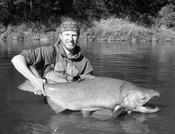
Registered: 02/22/09
Posts: 2741
Loc: Oregon Central Coast
|
I'd wager that most of the planters either were caught or died...the rest, very few, probably smartened up a bit.
Fish on...
Todd Yeah...what he said.
_________________________
[Bleeeeep!], the cup of ignorance in this thread overfloweth . . . Salmo g Truth be told, I've always been a fan of the Beavs. -Dan S. 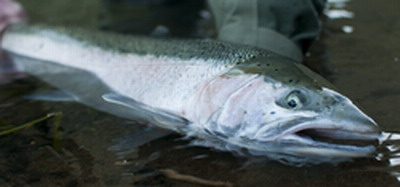
|
|
Top
|
|
|
|
#581534 - 02/15/10 08:59 PM
 Re: Thanks Curt
[Re: Todd]
Re: Thanks Curt
[Re: Todd]
|

River Nutrients
Registered: 11/25/01
Posts: 2834
Loc: Marysville
|
WN1A -
I'll attempt to address your questions -
Question #1 - sex ratio of the resident rainbows. While I don't have any "hard" infomration on the sex ratios (and haven't such information in the literature either) I can tell you that I see both males and females.
My sense is that until recently the vast majority of the resident fish I saw were males. However with the decline in the anadromous form and increase in the resident form I would expect to see inceasing numbers of females and limited observations are that is indeed happening. I would be interested in other folks observations.
Part of that equation is the relative fecundity of the resident fish. With the males it really doesn't matter whether the fish is a resident or an anadromous fish: both are capable of doing the "job". A true case where size is not all that important! However with the females there is an obvious advantage to being an anadromous fish. I would say typically the for first time spawners an anadromous female would have 5 to 10 times as many eggs as the resident fish. If the resident fish are allowed to live they do have higher repeat spawning rates.
While we are talking about sex ratios I think it is important to noted that folks have long seen resident males spawning with anadromous females yet virtual none of the wild steelhead brood stock programs include resident fish as part of the broodstock. A key point in the success of the well inregrated will broodstock is that the fish used as brood are representative of the wild populations. By definition any wild broodstock program that fails to include at least some wild resident fish is not a well integrated program.
I'll address Question # 2 in another post.
Tight lines
Curt
|
|
Top
|
|
|
|
|
|
0 registered (),
1371
Guests and
5
Spiders online. |
|
Key:
Admin,
Global Mod,
Mod
|
|
11499 Members
17 Forums
72963 Topics
825534 Posts
Max Online: 3937 @ 07/19/24 03:28 AM
|
|
|







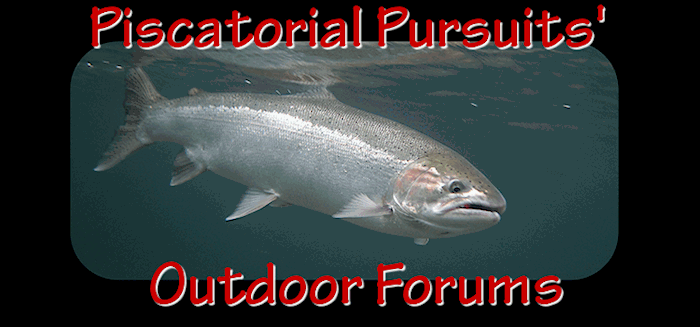







 Previous Topic
Previous Topic Index
Index

